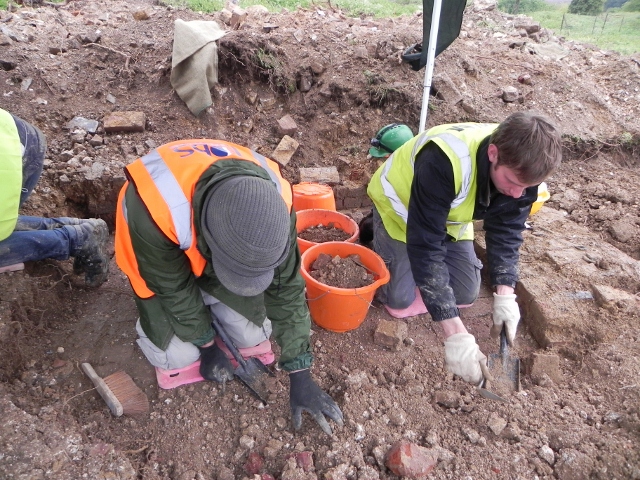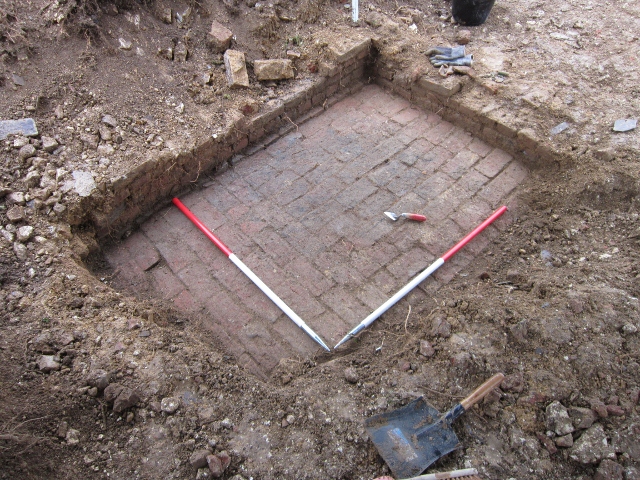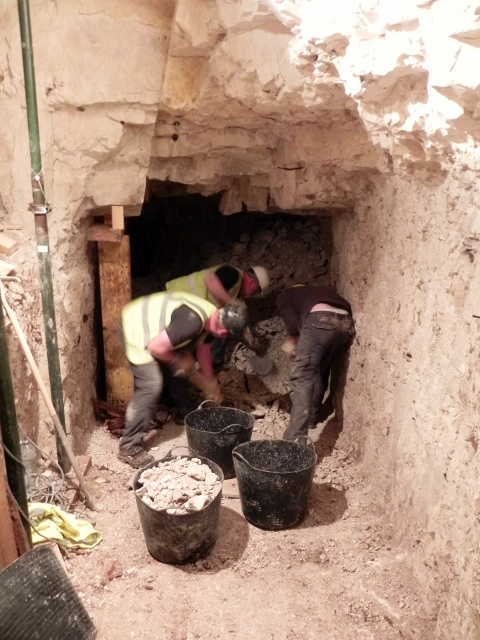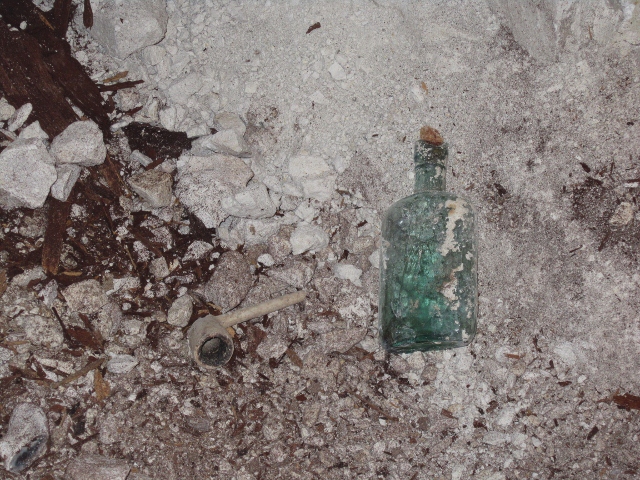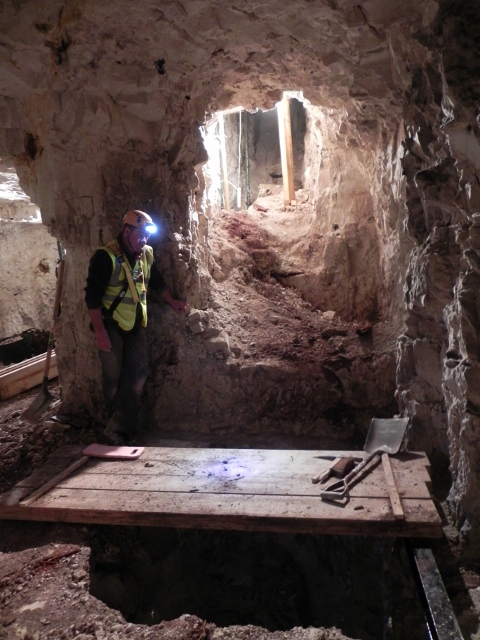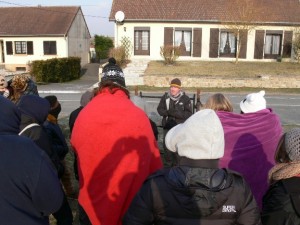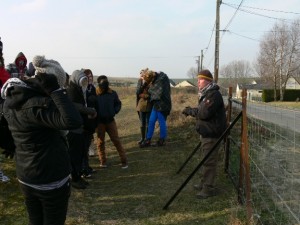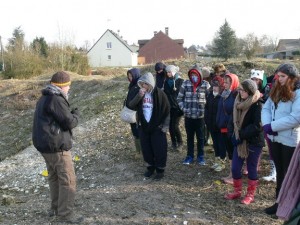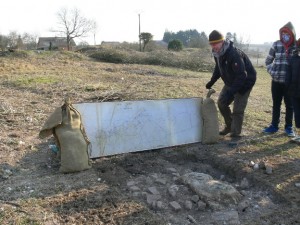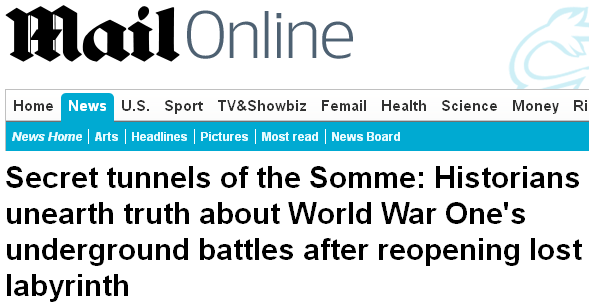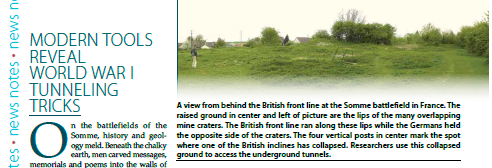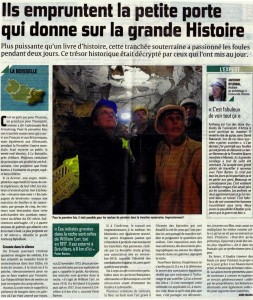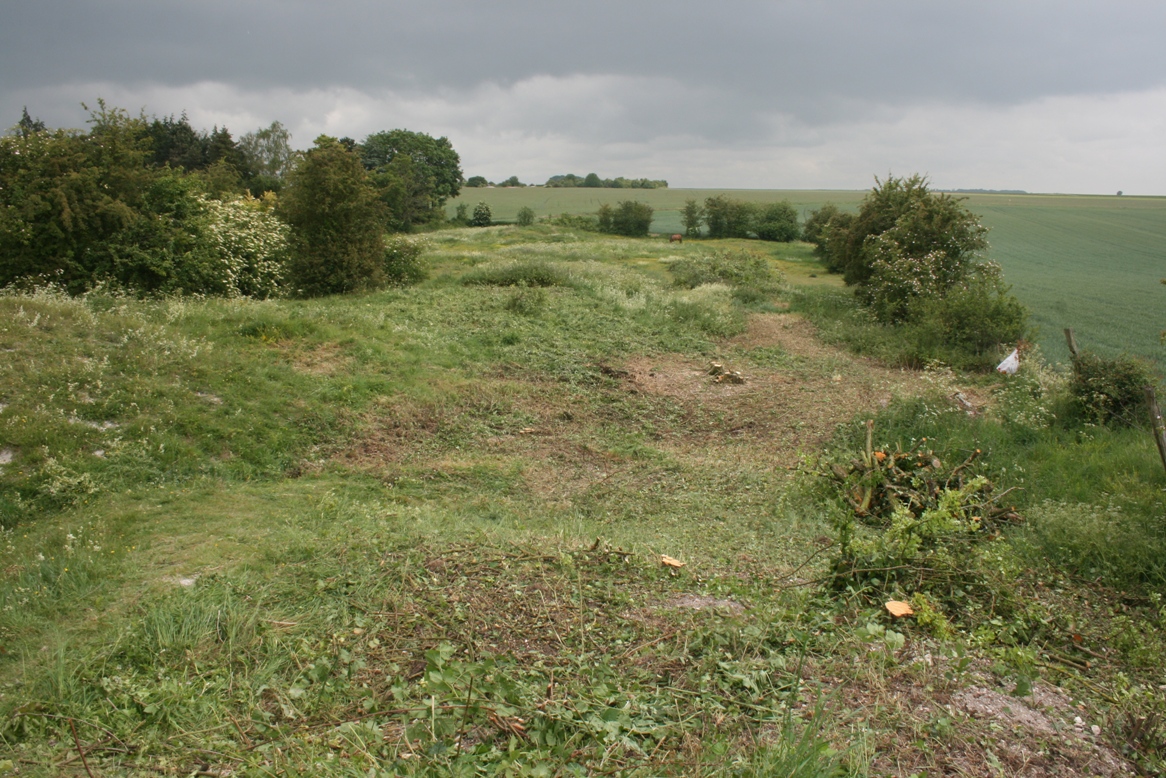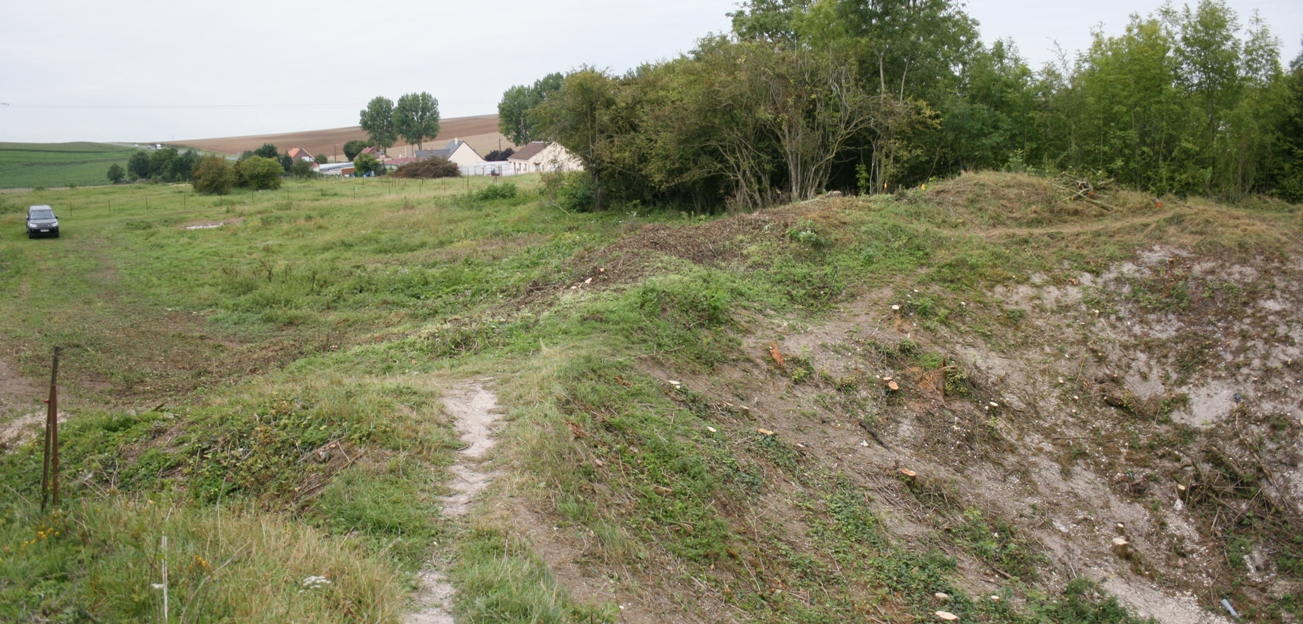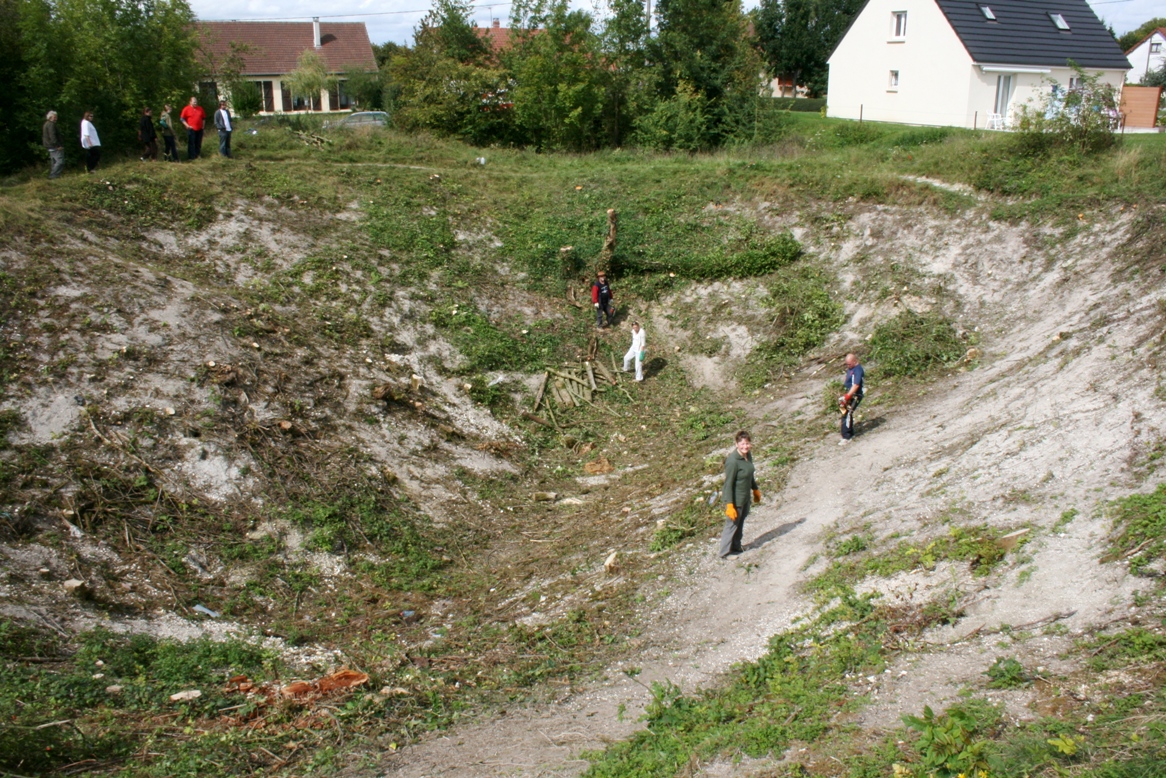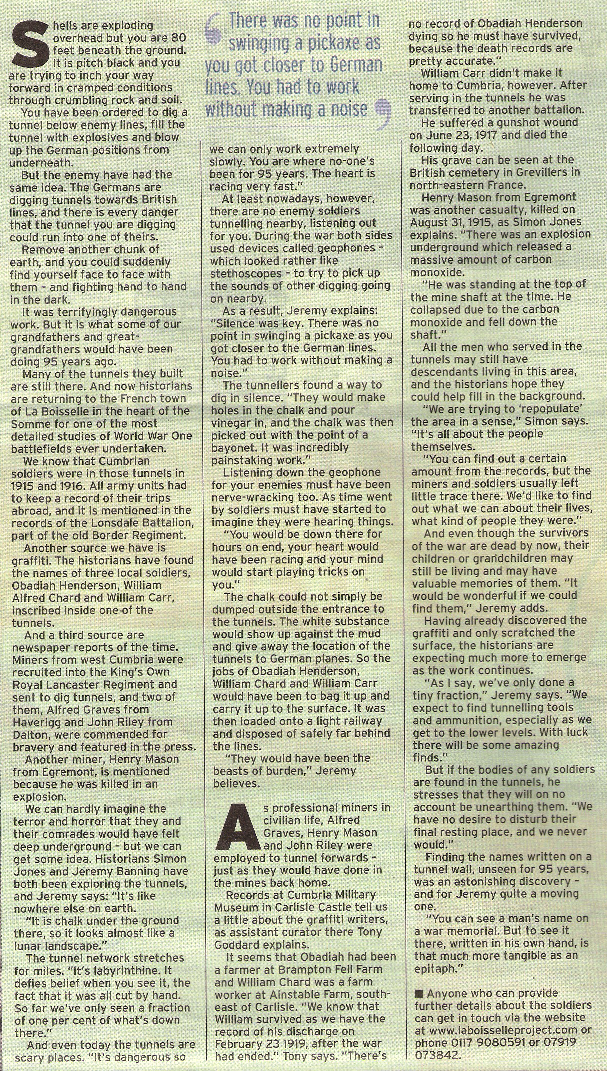We began work on Monday 30 April, erecting two new tents to be used for storing archaeological finds and to act as a workshop. ┬ĀFurther clearance work continued at the foot of X Incline (1915).┬Ā ┬ĀOur main focus has been on a larger sondage between X Incline, the Granathof ┬Āback towards W Adit. Topsoil was removed over a 50m x 30m area encompassing W Incline, Scone Street and Qu├®mart Street. This process revealed clearly the outline of trenches. Work has begun on opening a section of Scone Street as well as clearing around the covered entrance to W Incline.
A concerted effort began on uncovering what we believed was a surviving corner of the Granathof farm. ┬ĀResults have been spectacular with walls and a brick floor of the stable block uncovered. Using French maps sourced from archival research we have discovered one of the first trenches, dug through the stable block to the forward French trench. Many artefacts including large quantities of French and German small arms ammunition have been found at this spot.
Our efforts underground have been equally rewarding. Over the first week we have cleared an estimated 40 metric tonnes of chalk spoil from W Shaft chamber. The duckboard floor laid on W Adit has been extended further. Working in Petzl harnesses under strict safety requirements we have cleared the spoil from around the 50ft vertical W Shaft. As this will be our main access point into the underground system we have endeavoured to make this area as safe as possible. Using the expertise of key sponsor, Danny Gunner a bespoke steel safety cage has been built which which sits over the shaft. ┬ĀBolted and welded together, there is now a secure area with steel mesh floor in which to work from. Work will continue this week installing electric winches and a safety cage in which to stand under when at the shaft foot. We will also begin the delicate process of assessing the integrity of the vertical shaft walls and, if safe to do so, clearing up to 12 feet of spoil from the shaft foot.
We have welcomed hundreds of visitors. Many have been very generous in leaving donations. We would like to thank them for their help and for those who have donated via PayPal. If you are interested in helping us financially then please visit the Donate page. Our public thanks to the dedicated volunteers who have given up their time to help us with our work. Further thanks to Phil Giles from Pan 3Sixty who has been with us from the start, taking panoramic images above and below ground. These will be made freely available via our website.
We will be joined by Meridian TV on 16 May who are filming for an extended news piece to be broadcast later that day.
A full report of the archaeological work will be made available via the website upon completion of the dig. If you are planning on visiting the Somme battlefields before 16 May then please come and visit us.
Selected other images

Looking vertically down W Shaft. Approximately 12 feet of spoil needs clearing from the foot before access can be gained into the lateral tunnel.




